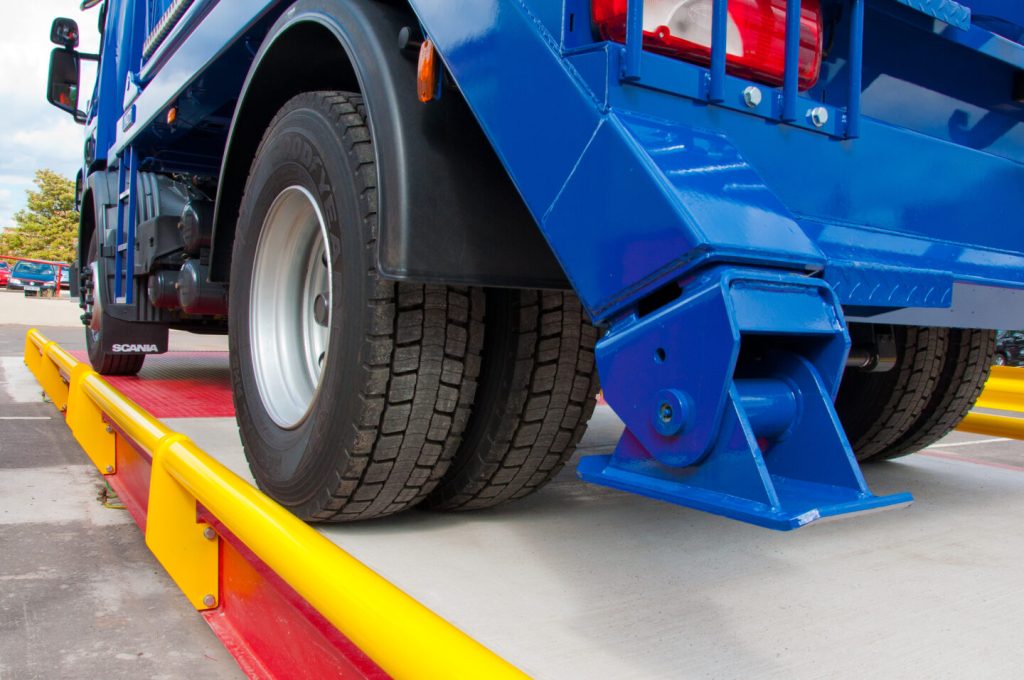Share
The efficient and effective control of overloading in the EAC Partner States requires the adoption of a harmonized approach to a variety factor related to the operation and management of weighbridges. Informative documentation was obtained from the three EAC Partner States where overload control is carried out (Kenya, Tanzania, and Uganda). Other relevant documentation was also obtained from the SADC/COMESA region as well as from abroad (e.g., UK, Australia, Japan).
Uganda has had fixed weighbridges at Mbarara and Busia-Kenya borders and mobile weighbridges on the highways of Kampala-Masaka-Mutukula, Kampala-Mubende-Fort Portal, Iganga-Malaba, and Tororo-Mbale.
Weighbridges have been noted as a major hindrance to free movement of imports and exports into and from Uganda.
Even when they have proper seals, commercial vehicles have to be weighed on axle load specifications at each weighbridge, leading vehicles to spend up to seven days on the road for a distance they could cover in two days. In 2007 a survey of non-tariff barriers that affect Ugandan imports and exports within EAC and COMESA countries found that although COMESA has harmonised the axle load at 16 tonnes for double axle and Gross Vehicle Mass (GVM) specifications at a maximum of 54 tonnes, Uganda is yet to implement the GVM component. Its specifications remains at 46 tonnes and is limiting to Kenyan and Tanzanian trucks which transit through to Rwanda, Burundi and Democratic Republic of Congo.
Commissioned by the Regional Trade Facilitation Programme (RTFP) on behalf of the COMESA/EAC and SADC Secretariats, the study covered 25 countries. It showed that Uganda will gain if transit procedures were harmonised. But as late as May last year, the government was procuring the mobile weighbridges under the World Bank funded East Africa Trade and Transport Facilitation Project (EATTFP). Following the suspension of the weighbridge activities, Nasasira has subsequently set up a committee of inquiry that commences work immediately to investigate the weighbridge operations between January and October this year. The committee findings should be ready by Dec 10. The committee will also examine the operations at the country’s borders, at the transit monitoring unit of the Uganda Revenue Authority in Kampala and at the coastal port of Mombasa. The committee will also interview all the people who have been involved in the weighbridge operations. The suspension of the weighbridge activities has affected over 72 Roads ministry personnel who were stationed at the six different weighbridge stations in the country.

Busia weighbridge. Weigh-in-Motion (WIM) is a technology that doesn’t require vehicles to stop for weighing.
Weigh-In-Motion is able to measure the weights and axle loads of vehicles traveling at normal speeds. The new WIM devices are designed to capture and record axle weights and gross vehicle weights as vehicles pass over a measurement site.
Trucks that have complied with axle load limits will not need to stop.
Both sides of the weighbridge have been fitted with the technology. That means truckers exiting the country to Uganda, and those coming in from Uganda will benefit from the effective system. For empty trucks, the system will automatically weigh and clear the truck allowing the drivers to drive through. Wellington Odali, KENHA’s at the Busia weighbridge said: “It has actually eased traffic in a big way and improved the effective operation of the weighbridge”
The Busia weighbridge measures about 1500 to 2000 trucks in a day. Mr. Odali noted that measures have been taken by the authority to improve compliance with its regulation by truckers across East Africa. Training and sensitization programs in partnership with transport Saccos have greatly been fruitful. The installation is timely and a relief to motorists following the huge traffic jams witnessed last year in Busia.
